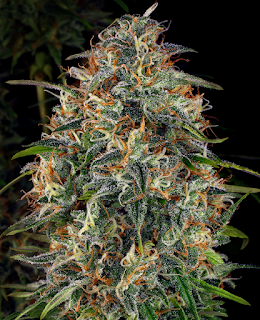Understanding Indica vs. Sativa vs. Hybrid Cannabis Strains
The first inquiry at a dispensary is often, "Do you like an indica or a sativa?" The two major classifications of cannabis strains are indica and sativa. Both the appearance and effects of indica and sativa cannabis vary. Sativa strains are recognized for a cerebral high, but indicas are typically known for a sedating effect. But it's trickier than we initially assumed.
It's critical to comprehend the differences between strain types because so many medical marijuana patients discover that a particular strain offers the best relief for their medical symptoms, which can range from anxiety and depression to chronic pain and epilepsy, and because the terms indica and sativa appear on cannabis packaging.
Indica vs. Sativa: Is There a Difference?
The characteristic "head high" that sativas are known for providing is something that some people find useful for being productive during the day. Contrarily, indicas are linked to a "body high" that has been said to encourage relaxation, sleep, and pain alleviation. It's been referred to as "couch-lock" before, perhaps. The third type of cannabis is known as a "hybrid," which is bred from both sativas and indicas and can have any variety's effects.
Indicas and sativas were previously derived from "landrace strains," but retail markets have since engaged in so much cross-breeding that strain classification now necessitates complex chemistry investigations.
What Actually Determines the Effects of Indica vs. Sativa?
New categories are being offered, and the discussion surrounding strains is much more complicated now than it was previously. The majority of strains are not solely indica or sativa due to selective breeding. Other elements are more indicative of the advantages and outcomes of a particular strain.
The THC profile and terpene profile of each strain are two of these elements that are crucial. You must comprehend how these elements affect your experience and the type of high you receive in order to choose the best strain. Let's examine each in more detail.
Cannabinoid Profile
Cannabis contains chemical components called cannabinoids, of which THC and CBD are the two most well-known. Consider basing your selection of strain on the ratio of THC to CBD rather than on whether it falls under the indica, sativa, or hybrid categories.
THC
Delta-9-tetrahydrocannabinol, also known as THC, is the psychoactive cannabinoid that causes the "high" and can also alleviate symptoms of nausea and pain. Cannabis strains that are strong in THC are well known for giving users a high or euphoric feeling. However, they are also well-liked for treating a variety of conditions, including pain, sleeplessness, depression, and anxiety (4). However, some individuals may choose not to experience strong psychoactive effects or they may feel uncomfortable after smoking strains with high THC concentrations. If so, a higher CBD content is the best option.
CBD
Cannabidiol, or CBD, has been shown in studies to reduce pain, anxiety, inflammation, and a variety of other medical conditions. It is non-intoxicating. THC is typically present in very little quantities in CBD-dominant strains. This is especially crucial if you're trying to manage discomfort while maintaining your composure or taking care of other pressing matters. Furthermore, CBD may lessen or neutralize the euphoric effects of THC. Some cannabis patients like a 1:1 ratio of THC to CBD as a healthy balance.
Terpene Profile
Terpenes, which are naturally occurring aromatic chemicals, give fruits and plants their distinctive aromas, such as the stimulating scent of citrus fruit or the relaxing scent of lavender. Terpenes produce potent volatile odours that operate as pest deterrents in the natural world. The cannabis plant's glands that create THC and CBD also produce these fragrant chemicals. They are what give each particular strain its distinctive bouquet of aromatics and flavors, as well as the plant's distinctive fragrance.
Indica vs. Sativa vs. Hybrid Edibles
Cannabis edibles and cannabis flower adhere to the same guidelines for indica/sativa/hybrid classification despite being quite distinct items. Store-bought edibles, however, generally contain distillate or other cannabis concentrates that are derived from the flower, in contrast to dried flower. As a result, there are significantly fewer edible options overall, and the differences between indica and sativa edibles are frequently less noticeable than those between indica and sativa flowers.
Like with flower, many cannabis experts now advise that customers choose edibles by considering factors other than the indica/sativa classification. Look for higher-quality edibles that contain particular terpenes because the extraction procedure used to manufacture edibles is renowned for removing the flavor-enhancing terpenes. You may learn a lot about the effects from the cannabinoid composition; for instance, edibles containing both CBD and THC will be more potent and lessen anxiety.



Comments
Post a Comment